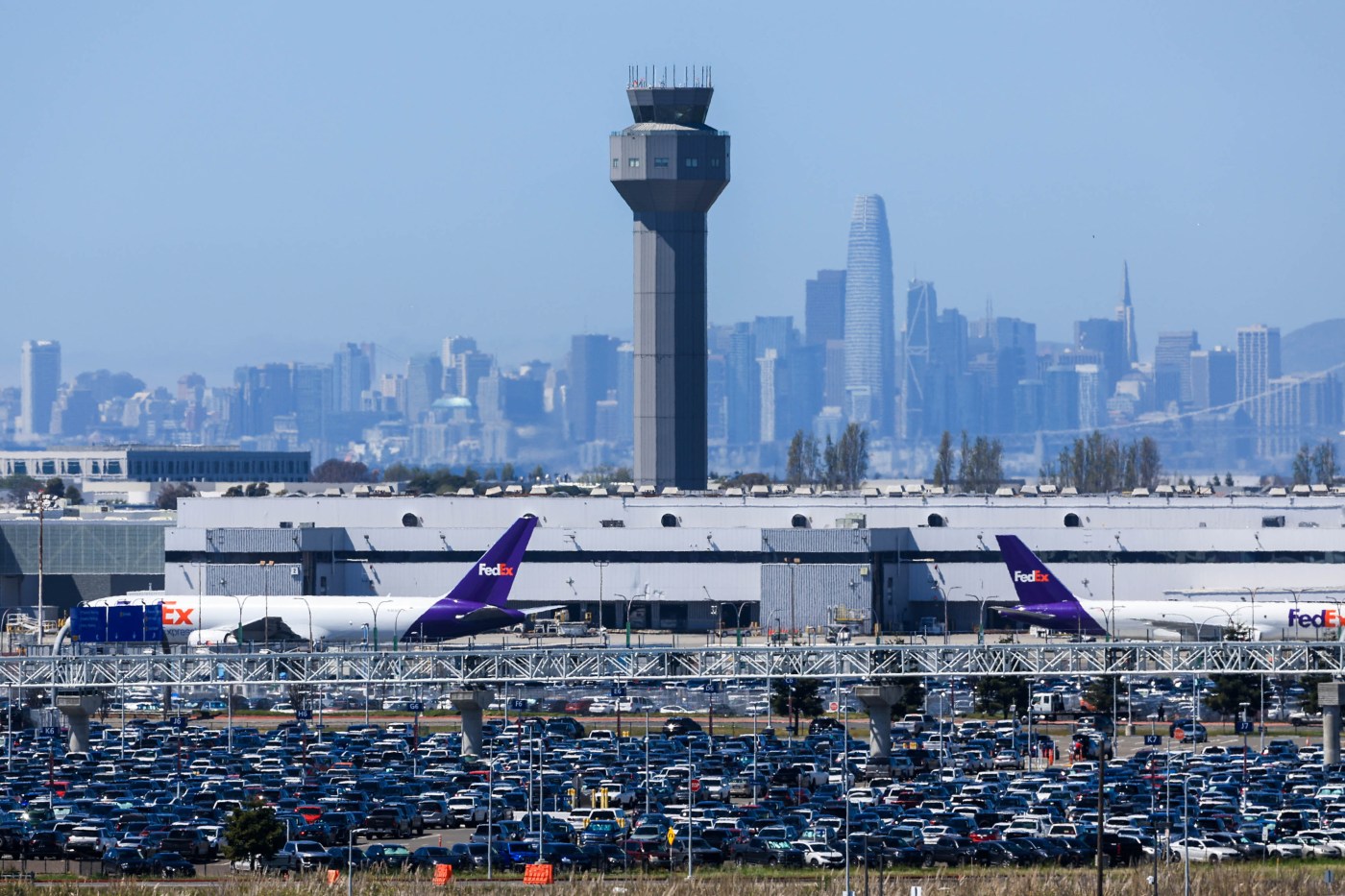The Federal Aviation Administration plan to trim air traffic on Friday as a U.S. government shutdown lingers is surfacing at a time when Bay Area airports are chasing a sustained rebound in passenger trips.
In changes that will affect two major airports in the region, FAA officials intend to reduce air traffic by 10% in the coming days at 40 high-traffic aviation hubs as a way to ensure safe operations due to air traffic controller staffing shortages.
Reuters reported on Thursday that a 4% reduction was expected to begin Friday, increase to 5% on Saturday, 6% on Sunday, and then up to the 10% goal by sometime next week.
In the Bay Area, the reduction could impact San Francisco International Airport and Oakland San Francisco Bay Airport, according to multiple news organizations.
“The Federal Aviation Administration has not formally indicated whether Oakland San Francisco Bay Airport will be included among the airports that may experience passenger service cuts,” said Kaley Skantz, a spokesperson for the East Bay aviation hub.
Similarly, San Francisco International Airport was awaiting word of a potential reduction.
“Ultimately each airline will determine how to comply with the order, and we know they will make every effort to proactively notify their affected customers,” San Francisco Airport spokesperson Doug Yakel said. “The best advice for passengers is to contact their airline directly for information.”
San Jose Mineta International Airport wasn’t on the list of possible aviation hubs that would be affected by the expected changes.
“We have not yet received any notifications regarding a reduction in the number of flights, so operations at San Jose International Airport are continuing without disruption,” said Ana State, an airport spokesperson.
Some airlines have already begun issuing travel advisories to passengers ahead of the possible FAA-mandated slowdown.
“The vast majority of our customers’ flights will not be disrupted,” Southwest Airlines stated in a post on its website. “Southwest will communicate directly with affected customers as soon as possible.”
Delta Airlines also said it expects the air traffic cutback won’t affect the great majority of its customers.
“We are providing additional flexibility to our customers traveling to, from or through the impacted markets during the impacted travel period to change, cancel or refund their flight,” Delta stated on its website.
American Airlines also believes most passengers won’t be affected.
“We encourage all customers to check their flight status on aa.com or the mobile app, which will provide real-time updates,” American Airlines stated. “Disrupting customers’ plans is the last thing we want to do.”
Potential air traffic slowdowns are arriving at a delicate time for the three Bay Area airports, which have yet to recover from temporary travel restrictions during the COVID-19 pandemic and the effects since.
After improvements in passenger totals in 2021, 2022, and 2023, San Jose and Oakland both began to suffer slumps in 2024 and the weakening pattern has lingered well into 2025, a review of official airport statistics shows.
Over the 12 months that ended in September, San Jose handled 11.09 million passengers. That was down 6.2% from the 11.83 million passengers who flew through the South Bay aviation hub over the one-year period that ended in September 2024, this news organization’s analysis of the airport statistics shows.
During the one-year period that ended in July, Oakland accommodated 9.72 million passengers. That was 13.5% below the 11.23 million passengers the East Bay travel center handled during the 12 months ending in July 2024. July was the most recent month of statistics posted by the airport.
Over the one-year stretch ending in September, San Francisco handled 54.38 million passengers, which was up 5.6% from the 51.51 million passengers it handled during the 12 months ending in September 2024.
San Francisco International Airport, however, remains below the altitude it achieved in 2019 when it saw 57.49 million passengers in 2019.
Oakland’s totals over the most recent 12 months are 27.4% below the 2019 total of 13.38 million passengers. And San Jose’s passenger trips during the year-long period ending in September were 28.5% below the South Bay aviation hub’s 15.65 million passengers in 2019.





